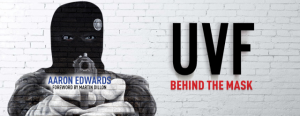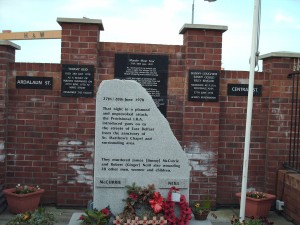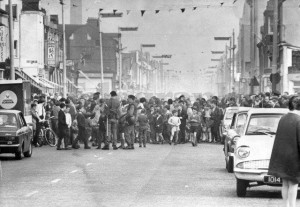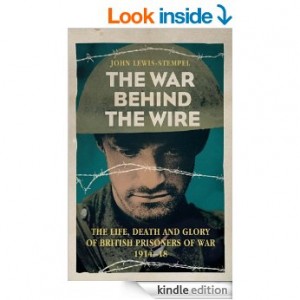Tom Vallance

Tom Vallance was very much a man for his time. It is inconceivable the many and varied talents this man was blessed with would have been allowed to flourish if he had been a footballer of the modern era. He was accomplished in so many fields. Arguably the most outstanding Scottish footballer of his era, he also held the Scottish long jump record for many years and was a keen rower.
Tom was a hugely impressive physical specimen, standing six feet two inches at a time when the average Scottish male was about five feet seven inches in height. He was, though, a gentle giant. He was an accomplished artist, exhibits being accepted on two occasions by the Royal Scottish Academy. He was also a prize-winner for the breeding of birds and dogs.
Tom Vallance was born at Succoth Farm, near Renton in 1856. In his early years, the family Vallance moved to Shandon, north of Rhu and a short distance from the home of the McNeil family. It was probably here that the future captain and president of the Rangers met the pioneer brothers Peter and Moses.
The census of 1871 tells us Tom was a “civil engineer’s apprentice”. Soon, though, he moved to Glasgow in search of work. He succeeded, employment coming as a mechanical engineer in a shipyard. Shortly after arriving in Glasgow, he joined the Clyde Amateur Rowing Club.
The road from the Gareloch to the big city had already been taken by the Campbells and the McNeils. The schoolboy friends met up again and Tom joined the football club recently started by his friends. Vallance soon made his mark in the popular new sport. A natural athlete, he settled into the full back role, reaching prominence, with his teammates, in the matches of the 1877 Scottish Cup Final against Vale of Leven. He was also a born leader, the first of the line of the great Rangers’ captains. By the end of the decade, he was the finest footballer in Scotland and England. In 1879, he had his brother Alick beside him in the first Rangers’ side to win a trophy, the Glasgow Merchants’ Charity Cup.

Tom made his first appearance for Scotland in 1877, in a 3-1 victory over England at the Kennington Oval. He would face the “Auld Enemy” on three further occasions, including victories of 7-2 in 1878 and 6-1, in 1881. Rangers’ colleagues George Gillespie and David Hill played in that match, the latter scoring Scotland’s second goal. Tom also had three victories over the Welsh to think back on in his twilight years. The only blot on an otherwise perfect international career was the 4-5 defeat at the Oval in 1879. The men in dark blue had led by 4-1 at half-time!
In February, 1882, Tom Vallance made the bold decision to seek out a new career in the tea plantations of the northeastern Indian state of Assam. It was a move that nearly cost Tom his life. Within a few months of arriving in India, the great athlete was struck down by a form of malaria. He made the decision to return to Scotland.
He played three times for Rangers in 1883/84 season but it was clear the illness had taken its toll of Tom’s health. His final game in his beloved light blue was in a 9-2 victory over Abercorn at Kinning Park. (He did, though, appear for the “Ancients” for a number of years.)
In retrospect, it can be argued that Tom Vallance’s contribution to the fortunes of the Rangers was greater, more important, off the field of play rather than on it. During Vallance’s time in India, John Wallace Mackay had come to power in the role of honorary match secretary; power he would wield to the great detriment of the Club. Tom was appointed club president in 1883, the first of six seasons in the role. His commitment to the role achieved great support for him in his battle to control the excesses of the greatly unpopular Mackay.
By now, Tom was a travelling salesman in the wine and spirit trade. This was the first rung on the ladder to a successful career in the hospitality industry. It would eventually lead to Tom becoming a highly-respected restaurateur, the owner of three city restaurants.
He also settled into married life. His bride on 18 August, 1887 was Marion, sister of Tom’s team-mate, Willie Dunlop. Brother Alick was Tom’s best man.
Tom and Marion had two sons. Harold, born in 1889 and James two years later. In between the births of the boys, Tom took ownership of his first restaurant, The Club at 22 Paisley Road West which is now The Viceroy Bar He would later take into his portfolio, “The Metropolitan” in Hutcheson Street and “The Lansdowne” in Hope Street.

Like so many of their generation, the Vallances suffered the loss of a son in the Great War. Second Lieutenant Harold Vallance died only six weeks before the end of hostilities, in September, 1918. Tom had also had to bear the loss of his much-loved sibling, Alick. He died, aged only thirty-eight, in 1898.
Tom Vallance succumbed to a stroke at his home at 189 Pitt Street on 16 February, 1935. Appropriately, Rangers won that day, a victory by three goals to one over Airdrieonians at Ibrox.


























